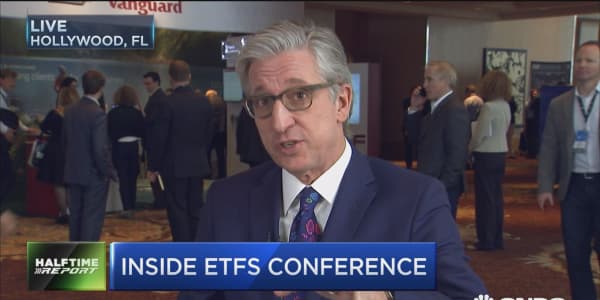Brad Katsuyama, the crusading hero of 2014's market-shaking best-seller "Flash Boys," has softened his tone a bit when it comes to high-frequency trading.
During a presentation Tuesday at a conference in Florida, the head of the Investors Exchange gave what amounted to a 35-minute sales pitch for his trading platform.
The talk provided a detailed look at how IEX creates a level playing field for market participants that differs from what he believes are unfair advantages that some HFT firms get. Absent, though, was the fiery rhetoric he used last March when Michael Lewis' book hit the shelves.
Lewis famously claimed the stock market is "rigged," while Katsuyama engaged in an epic showdown on CNBC with BATS Global Market President William O'Brien.
Read MoreFlashback: The Katsuyama-O'Brien smackdown
But his discussion at ETF.com's InsideETF's conference didn't even touch on the book as he sought to draw clear lines between good high-frequency traders and bad ones.
Starting IEX "was about trying to understand the advantage that certain people have in the markets and trying to take that advantage away," Katsuyama said. "It was never about being anti-high-frequency trading. It was really about being pro-fairness."
Traders who use arbitrage to benefit from price inefficiencies between, say, an exchange-traded fund and its underlying components, practice good HFT in his view. Those who use faster access to economic data, or who can react more quickly to headlines because their trading infrastructure is placed more closely to market centers like the New York Stock Exchange—"co-location," in market parlance—practice bad HFT, he said.
Read MoreEl-Erian: These are the 2 big market risks
Investors should know the difference and act accordingly, Katsuyama added. IEX places a "speed bump" in its system that aims to prevent participants from getting unfair co-location advantages.
"Ultimately, start voting with your feet," he said.





